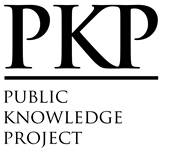Assessment of antibiotics sensitivity of microbial isolates from fish hatcheries
Abstract
The study assessed the antibiotics sensitivity of bacterial isolates from fish hatcheries. The result revealed that bacteria of public health importance were isolated, however, the TVC did not exceed 105 CFU/g. A total of 16 isolates were detected. Thirteen (13) antibiotics recorded over 50% resistance, with the highest resistance (100%) observed in amoxicillin clavulanate (AUG). Ofloxime (OFX), gentamycin(GN) and levofloxacin (LBC) recorded the lowest resistance of 18.75%, 37.5% and 43.75% respectively. Only these antibiotics with least recorded resistance had susceptibility ranging between 50% (LBC) and 68.75% (OFX). The overall average resistance of the isolates to antibiotics was 68.75%; susceptibility 26.67% and intermediate 4.58%. Isolates 15 showed the highest resistance of 100%, followed by isolates 12 and 10 with 93.33% and 93.33% resistance, respectively. Resistance range of 60% to 86.67% was observed in isolates 2, 4, 5, 6, 7, 9, 13, 14, 16 and 17. Isolates 3, 8 and 11 had resistance below 50% ranging between 26.67% and 46.67%. The highest multiple antibiotic resistance index (MARI) was observed in isolate 15 with MARI of 1. Isolates 10 and 12 had MARI of 0.93. This was followed in descending order by isolates 2 and 9 (0.86), isolate 5 (0.8), isolate 14 (0.73), isolates 6 and 7 (0.67) and isolates 4, 13, 16 and 17 (0.6). The least MARI recorded were observed in isolates 3 and 11 (0.47) and isolate 8 (0.27), respectively. The emergence of antibiotic resistance on fish farms in Ijebu-Ode region calls for public health intervention strategies.
Keywords: antibiotic; fish health; isolates; resistance.
Full Text:
PDFReferences
Adedeji, O.B., Emikpe, B.O., and Adebisi, T. 2011. Bacterial load on the skin and stomach of Clarias gariepinus and Oreochromis niloticus form Ibadan, South West Nigeria: Public health implicatios. Journal of Microbiology and Biotechnology Research, 1(1): 52-59.
Adedeji, O.B., Okerentugba, P.O., Innocent, D.E., Adiele, H.C., and Okonko, I.O. 2012. Benefits, public health hazards and risks associated with fish consumption. New York Science Journal, 5(8): 2039-2047.
Akinbowale, O.L., Peng, H., and Barton, M.D. 2006. Antimicrobial resistance in bacteria isolated from aquaculture sources in Australia. Journal of Applied Aquaculture, 20(2): 108-119.
Cabello, F.C. 2006. Heavy use of prophylactic antibiotics in aquaculture: a growing problem for human and animal health and for the environment. Environment. Microbiol, 8: 1137-1144.
Clinican Laboratory Standard Institute (CLSI) 2012. Current Clinical and laboratory Standard Institute Criteria for interpretation of susceptibility testing of carbapenems in Enterobacteriaceae. CLSL document M100, S22.
Du, L., and Liu, W. 2012. Occurrence, fate, and ecotoxicity of antibiotics in agro-ecosystems. A review. Agron. Sustain. Dev., 32: 309–327.
Durojaiye, A.F., Ojetayo, T.A., Sule, S.O., Balogun, T.E., and Akintuyole, A.S. 2020. Incidence of Diseases in Fish Hatcheries and Control Measures Adopted by Fish Farmers in Ijebu-Ode Region, Ogun State, Nigeria. FUW Trends in Science and Technology, 5(1): 083-086.
Durojaiye, A.F., Sule, S.O. and Ojetayo, T.A. 2019. Health Management Practices Adopted in Fish Production at Eriwe Fish Farming Community, Ogun State, Nigeria. Nigerian Journal of Scientific Research, 18: 503-511.
Durojaiye, A.F., and Sule, S.O. 2018. A Preliminary Assessment of Aquamedicines used at Eriwe Fish Farm Community, Ogun State, Nigeria. Proceedings of Fisheries Society of Nigeria 33rd Annual Conference, 28th October-2nd November, Ikorodu, Lagos.
Food and Agriculture Organisation, FAO 1979. CFU g-1 as approved by Food and Agricultural Organization (FAO, 1979). http://www.fao.org/3/T0610E/T0610E.pdf.
Food and Agriculture Organisation, FAO 2016. The State of World Fisheries and Aquaculture 2016. Contributing to food security and nutrition for all. Rome. 200 pp.
Food and Agriculture Organization FAO. 2014. The State of World Fisheries and Aquaculture 2014. Rome. 223 pp www.fao.org/3/a-i3720e.pdf.
Harrigan, W.F., and McCance, M.E. 1976. Laboratory methods in food and diary microbiology (2nd ed). Academic press Inc. London. https://agris.fao.org.
Heuer, O.E., Kruse, H., Grave, K., Collignon, P., Karunasagar, I., and Angulo, F. J. 2009. Human health consequences of use of antimicrobial agents in aquaculture. Clin. Infect. Dis. 49: 1248–1253.
Hilary, A.O., Musa, O.N., Mercy, M., Joseph, W., and Patrick, M.K. 2018. Microbiological safety of fresh tilapia (Oreochromis niloticus) from Kenyan Freshwater fish value chains. Journal of Food Protection, 81(12): 1973-1981.
Lalitha, MK. 2004. Manual on antimicrobial susceptibility testing: Indian Association of Medical Microbiologists. pp. 3-4.
Ogunleye, S.C., Ishola, O.O., Faroyin, O.M., and Adedeji, O.B. 2021. Total aerobic counts from Oreochromis niloticus obtained from selected frms in Ibadan. Sokoto Journal of Veterinary Sciences, 19(1): 55-60.
Omoya, F.O., and Ajayi, A.T. 2020. Assessment of the microbial tuality of seafood and effects of salt concentration and temperature on isolated microorganisms. Journal of Microbiology and Antimicrobials, 12(1): 17-31.
Romero, J., Feijoó, C. G., and Navarrete, P. 2012. Antibiotics in Aquaculture Use, Abuse and Alternatives. Rijeka: INTECH Open Access Publisher.
Stukus, P.E. 1997 Antimicrobial testing. The Kirby-Bauer method (filter paper disk method) in Stukus, P.E (Ed) Investigating microbiology: a laboratory manual for general microbiology. Oriando Harcourt Brace & Company cap., 44. P243-247.
Tiamiyu, A.M., Soladoye, M.O., Adegboyega, T.T., and Adetona, M.O. 2015. Occurrence and Antibiotic Sensitivity of Bacterial Strains Isolated from Nile Tilapia, Oreochromis niloticus Obtained in Ibadan, Southwest Nigeria. Journal of Biosciences and Medicines, 3: 19-26.
Troell, M., Naylor, R. L., Metian, M., Beveridge, M., Tyedmers, P. H., and Folke, C. 2014. Does aquaculture add resilience to the global food system? Proc. Natl. Acad. Sci. U.S.A. 111, 13257–13263.
World Health Organization, WHO. 2016. WHO Global Principles for the Containment of Antimicrobial Resistance in Animals Intended for Food: Report of a WHO Consultation with the Participation of the Food and Agriculture Organization of the United Nations and the Office International des Epizooties. Geneva: World Health Organization. http://www.who.int/foodsafety/publications/containment-amr/en/
DOI: https://doi.org/10.29103/aa.v10i3.10154
 Article Metrics
Article Metrics
 Abstract Views : 230 times
Abstract Views : 230 times
Refbacks
Copyright (c) Acta Aquatica: Aquatic Sciences Journal

This work is licensed under a Creative Commons Attribution 4.0 International License.









